The Ministry of Defence intends to spend up to £240 million on the first two of four DragonFire laser directed-energy weapon systems for Royal Navy warships, according to a tender notice.
Published on 4 June under the Procurement Act 2023 pipeline regime, the notice describes a contract for “Laser Directed Energy Weapons” valued at £200 million before VAT.
The award is expected to run from 3 November 2025 to 31 March 2028, with an option to extend to December 2032, and would deliver two ship-board units classed as goods under CPV code 38636100 (lasers).
The procurement represents the first concrete step toward fielding DragonFire at sea after the Government’s March commitment to install the system on four vessels by 2027; securing two units now would cover half of that target. DragonFire, developed by Dstl, MBDA, Leonardo and QinetiQ, has already demonstrated the ability to engage drones at tactically relevant ranges, with officials emphasising its low per-shot cost.
Funding for the programme sits within the additional £2.2 billion defence allocation announced in the Spring Statement. Chancellor Rachel Reeves called the money a “downpayment” on plans to raise defence spending to 2.5 percent of GDP by 2027, with a particular focus on directed-energy weapons and artificial intelligence.
Dragonfire
DragonFire is a British laser directed-energy weapon (LDEW) demonstrator developed for the UK Ministry of Defence by an industry team led by MBDA UK, Leonardo UK and QinetiQ. The project, launched in 2017 under the MoD’s “Novel Weapons Programme,” couples a 50 kW-class fibre-combined laser with a high-precision beam-director turret and an advanced electro-optical sensor suite.
Unlike kinetic interceptors, the system delivers energy at the speed of light and expends only electrical power—dramatically reducing the cost per engagement (often quoted at well under £20 per shot) and eliminating the logistical burden of storing conventional munitions.
At the heart of DragonFire is a spectral beam-combining architecture that merges the output of multiple industrial fibre-laser modules into a single, near-diffraction-limited beam. Closed-loop adaptive optics stabilise the beam against atmospheric turbulence, while fast-slew gimbals and a high-frame-rate tracking sensor keep the aimpoint steady on targets as small as a 2p coin at several kilometres.
This combination allows the system to defeat or degrade a wide range of threats—including small unmanned aerial vehicles, mortar and artillery rounds, fast inshore attack craft, and even certain classes of cruise-missile seekers—by ablating structural material, detonating warheads, or dazzling electro-optics.
Ground trials at Porton Down culminated in October 2023 with the first UK laser shoot-down of representative aerial targets, validating power-on-target, pointing accuracy, and magazine depth.


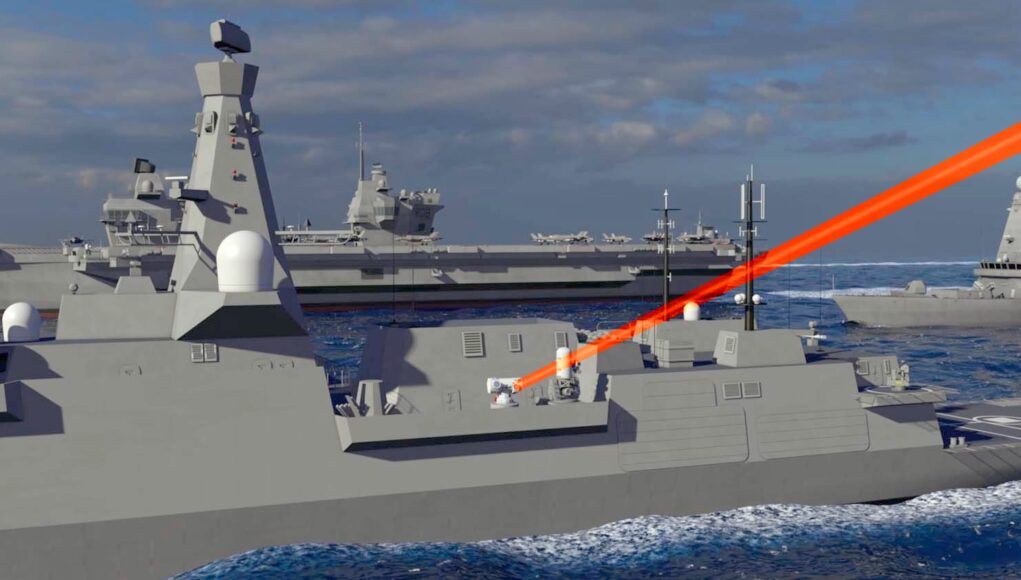
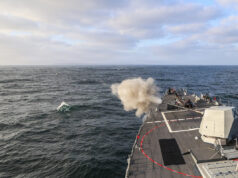
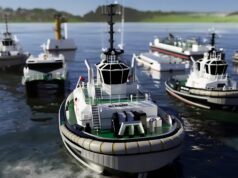
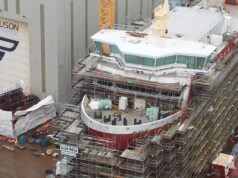
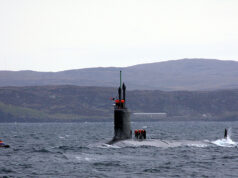
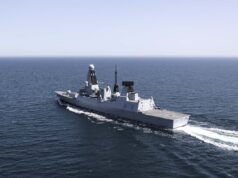

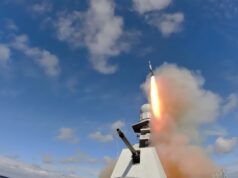
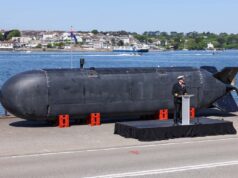
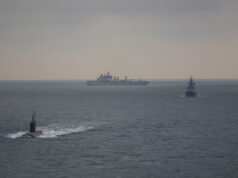
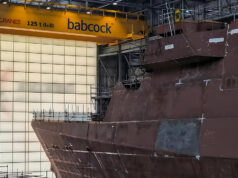

I thought that the whole rationale of laser point defence was it was cheap both to buy and use? Even with economies of scale we are not up to a good start. For at this rate is a new frigate.
Quite, this is T31 money.
I suspect this is a bit more than the drone shoot down machine which the Chinese gifted the Russians.
Laser cannons were were never cheap to purchase but were supposed to be cheap to operate. £10 per shot was often quoted. I have Googled the operating costs and have seen some remarkable sums. Whilst they only cost £10 per shot they come out big numbers to maintain.
Realistically no one knows the cost of each shot. It’s just speculation based on energy usage. What is unkown is how efficient they are (what input power is needed for the output) and how much mainatance is needed per shot or how many lifetime shots is it capable of before heat damages it behind repair. We should hopefully start getting some of the answers as they enter service and more is known about them. A key indicator will be how often they are used in training, if its once in a blue moon then we will know there are underlying costs.
Hopefully like anything new it will start off expensive and then come down in price to build, fit and maintain. 🤞
Exactly. If 30mm airburst rounds are as high as £500 each, and 10 were fired at each target, you would still need this ship to be attacked by 4,800 small drones to spend £240m on 30mm ammo.
Sounds great but at only ‘few KM’ how long does it need to stay on point to get a kill on a target? That along with how many shots / how long it can keep firing will determine its effectiveness.
Ages if it’s foggy or raining.
Fog /rain can be mainly overcome through using physics and adjusting wavelength/etc. For a navy asset you would hope they have thought that through or it will be pretty useless.
Basically you offset the impact of the fog through calculations of knowing how it will likely impact the beam
It’s certainly more expensive than I anticipated. I’m hoping all the R&D costs are covered in the first few models and the unit price drops substantially after.
Lasers are not too expensive but the supporting equipment such as targeting, stabilizing etc are an expensive part of weaponizing a seaborne laser weapon.
They may be cheap per shot, but 2 systems for £240 million??
And some here were calling for this to be installed at CNI sites around the UK!
5% won’t be enough!
That’s was me and before the published unit price of £120 million each. We are being ripped off. That’s too expensive for anyone to ever state it costs £10-20 per shot. How many shots will it fire in its lifetime 60 million? That warship would be having a very active career if so.
The government need to go back to manufacture and tell them to half, then half then half the price again.
We are never going to be able to leverage effective weapons that can become polyvalent and cover our national requirements at this price. Another example of GUCCI kit and the UK being ripped off.
If Dragonfire cannot be manufactured at <£5 million each then the UK should not invest or purchase any.
A set of radar guided Bofors guns would be much more cost effective.
I agree.
I’ve often wondered why, almost every time, when we buy something or sign a contract one blinks again at the costs.
Do MoD like being fleeced? Or, again, is it a case of as much pork to the MIC as they can feed and sod VFM?
I hope ABC below is right.
Cost of a phalanx to fire a one second burst is $3500. There is the comparison, I guess.
At these prices this is supposed to impress? sorry, but I’m not.
Rip off
As long as the generators can keep supplying enough power! How quickly can they recycle and repeat fire? What happens if there is an electrical failure? Plenty of questions still to answer.
Another fantastic development from the UK Defence Industry (for shareholders), shining a light on the future and all for less than 10 pence a shot (inflation seems to have gone up a tad since last year).
“Burning holes” in the budget.
Yeah it was £100m for the entire development and prototype. £100m per unit is crazy. That’s a 3rd of a type 31.
I hope that includes a lot of maintenance and increased power from the prototype.
Another non event from Reeves and co.
Assuming these systems will equip both remaining escorts, does anyone know when the other two systems will be bought and to which ships they will be fitted ?
It’s fine we will be down to 2 escorts by 2028.
Ah but yeah but no but, we are adding Transits to the Escorts so we can patrol Granada, Capri, Cortina and the Sierra’s unless they are having a Fiesta.
Lets hope we can a Ford them.
I like you, you have depth, you have intellect you have “The right stuff”.
I here the navy are planning for mini breaks to st Petersburg.. join the RN it’s a mini adventure.
Actually I just read the contract notice. This is essentially instead of finalising the development they are installing it early and doing the development testing on the ship. Which is why it’s called the “minimum deployability contract”. So yes this will include a lot of the development cost that was going to be needed anyway. Only now it will be developed in field and hopefully provide a level of protection in the mean time.
Lesson learned from getting prototype weapons into the field in Ukraine I guess. It’s an accelerator.
OK on the face of it £250 million for only 2 units is lot of money, but when you are building very high tech kit the first few of anything costs a fortune. As with most MOD contracts the devil is in the detail or more specifically the payment schedule (or how to buy a £1000 pound nut by paying for 1 face pa over 6 years).
Just remember until production is established they are practically hand built, but one you start building more in a modern production system the costs per unit drop (you just need to order mass).
The interesting bit is it’s only 2 to start off with and that’s got me thinking. If we are ordering using the present budget constraints then MOD would very sensibly prioritise the highest value and most vulnerable vessels first.
Anyone know of 2 huge, very large expensive vessels, that are IEP powered (massive generating capacity), have large crews, can have several £billions worth of assets onboard and are very vulnerable to drones with pitifully little self defence capability ?
Yep I’m betting these are for the QE’s, mounting them on 2 escorts is fine but you can’t guarantee they will always have 1 nearby.
Good News !
Makes sense considering this is a test at sea contract so having them on the vessel that can launch targets for it to be tested on when desired makes some sense. I do think people need to wait, as you suggest till we know what’s exactly involved in the contract before they descend into whining mode. Best to have a viable target before you engage methinks.
That would make sense, but you’d want multiple lasers for each carrier. This will be for one or two Type 45s. Once the lasers have been tested on the escorts, they might be ready for carrier use. Not as a development in-field.
I suggest it will be T45’s for the first fit with the new power train they should to both be able to manouver and charge these weapons with all the engines working! One will be fitted to a hull and most likely the other will be a land fit as both research and training will be required. Its really along way from being the Star Wars weapon of Scir Fi. In the past we used to have vessels that could cover such whilst not affecting the frontline.
I note that these will be sublementary weapons to which ever Ship gets them as hard kill (Gun) is very hard to defeat. The Bofors fit all round and make it the CIWS of choice across the fleet, effective and easier all round for the few sailors we have today its also high tech with the choice of rounds.
Rather the £250million be spent on buying more CAMM or upgrading a dozen or so Phalanx to SeaRam!
Best way to visualize Dragonfire’s fibre laser, is to consider the Deathstar in Star Wars, where when it is fired, 8 smaller beams collectively formed a stronger single beam. Dragonfire works in similar way, except the beam forming collectively in this instance is done through a series of lenses, that then collimates (focuses) the beam. Apparently this has been the biggest issue to solve, i.e. focusing the spot on a moving target. According to the blurb they have solved this. The beauty with fibre lasers is that they are scalable, so you can dial them right down using only a few of the lasers to say dazzle a target, then dial it to the max to help it burn through targets quicker.
Are there also applications for this technology in laser missile guidance?
Both the more focussed beam and the improved aiming stability on the target would useful for SAL guidance and the SACLOS beam riding, but by how much?
Would, for example they allow laser guidance to finally be useful for point-defence missiles, avoiding complex and expensive radar? I know APKWS has been used against drones, but paired with a properly manoeuvrable missile it could be more useful.
And anything that increases the effective range of StarStreak or any future derivatives would be useful.
The main issue with laser based guidance is that the laser must be illuminating the target constantly from start to finish. Unless the weapon is also equipped with an inertial navigation unit and data link. Where the platform updates the target’s whereabouts to the weapon via datalink and the laser is reactivated as the weapon gets much closer to the target for its terminal approach. This is all doable, but!
It is really difficult to illuminate multiple targets and track them with a single laser. Lasers don’t work so well if you try to use electronic beam forming and steering. as radar does with PESA and AESA arrays for example. The laser scanning has to be done using mechanically steering mirrors and fibres. It’s sort of due to how multiple laser must be synchronised otherwise the constructive and destructive interference doesn’t really work. It is doable, but it’s primarily using very small laser used in data networks and communications. There are a number of companies starting to scale up the process, so that it can be used in LIDAR instead of motorised mirrors. Because the switch speeds of a laser along with the motorised mirror’s movement can be really fast (measured in the micro to milliseconds) you can do a raster scan to create LIDAR. Where the beam sweeps left to right and up and down. which can be used to create very detailed images. It can be used to track a target or a number of targets. Additionally as processing power is where it is today. You can do what is called flash scanning by a laser. This is where the beam (pulsed or CW) of the laser goes through a convex lens to diverge the beam in all directions (more like a 90 degree cone). The light bounces off targets and the time differences on the reflection generates an image. If multiple images are overlaid, you can use an algorithm to track a moving object within the image set.
The current APKWS must have its target constantly illuminated throughout the engagement. Bu being based on the 70mm unguided rocket it doesn’t have much agility, range or speed. Which kind of counts it out against very high speed targets or ones that do a lot of manoeuvring, but great against cheap slow and predictably moving drones, also some cruise missiles. However, it is getting an additional IR seeker. Where the operator illuminates the target, the IR seeker acquires the target from the reflection then locks on to it. This will give APKWS a form of fire an forget capability.
Starstreak uses a form of semi-active control line of sight (SACLOS), but ramps it up to 10. The command firing unit, illuminates the target with two lasers, these draw a grid pattern over the target. The missile will try to steer itself to be within the centre of the grid. A receiver is in the tail of the 3 darts that are released by the carrier unit. This means so long as the operator keeps the target sighted, the darts will align themselves to intercept the target. The target cannot use a laser dazzler to interfere with the darts, as they’re looking back towards the command unit. However, it does mean that the operator can only engage one target at a time.
Could this be automated, yes via LIDAR. As per the method to send data down a fibre optic. By using pulse coded modulation, you can codify data transmitted by the laser, as it sweeps the sky. Within this data you code add a weapon’s address code. So much like the current method used by Starstreak. You could by codifying the LIDAR transmission communicate and control a number of weapons in flight to multiple targets.
I guess one of the issues is cost of the laser mirror control system and how robust it would be. Would it be any cheaper than a beamforming radar? Possibly, besides it wouldn’t need to be as powerful as Dragonfire, though the variably focusing optics would significantly help. But again it’s all doable!
So if we want a 10-12km range mashup of StarStreak and Martlet, the best way to do it is use a combination of the laser and INS for midcourse guidance, but an IR seeker in the terminal stage?
There’s a few things you can do to increase Starstreak’s range. The size of the darts does complicate fitting an IR sensor. Fitting the laser sensor in the tail makes a lot of sense.
There is a choice to be made, in either keeping the 3 darts, or making a unitary weapon much like Martlet? Using a unitary design does have some benefits. A singular body does mean you could store more fuel along with holding a larger warhead. It also means you have space to hold a high fidelity and off boresight moveable IR sensor in the nose. Which would allow the weapon to chase a target without the operator maintaining contact with it, ie fire and forget.
However, to make sure the sensor has a clear field of view. The protective window needs to be hemispherical. This means that wherever the sensor is pointing, the window’s clarity must stay the same. Which isn’t great for supersonic aerodynamics. Additionally a larger unitary body will generate more drag. So after the rocket has burnt out, it will slow down quicker.
As good as imaging infrared sensors are today. They are still susceptible to countermeasures, particularly directed infrared countermeasures (DIRCM). Which has the ability to dazzle the sensor and feed it false information.
The laser based system it uses, makes it nigh on impossible to counter. The downside being the laser must constantly illuminate the target. Which means the weapon can only make an intercept, so long as the target remains in line of sight if the command unit/laser.
One method you could use to increase the range of Starstreak is to replace the 1st stage rocket with a soft launch gas generator and piston. Then incorporate the 1st stage into the 2nd stage. Therefore only the impulse of the rocket is used to accelerate the weapon and not push it out of the tube. I suspect that Thales use two different fuel compounds in their rocket stages. With the 2nd stage using a higher rate propellant fuel. Making it all one high rate fuel type will increase the burn duration. Which should extend the range.
The other more difficult thing to sort, is the weapon’s flight path. As Starstreak travels so fast, it travels directly towards the target, ie the shortest path from A to B. However, as the operator is effectively chasing the target. It uses up more energy to get there.
There is another method that uses the predicted intercept point. Where the missile leads the target to reach the predicted interception point. Furthermore some missiles use a quasi-ballistic path to the target. This helps increase the range, as the missile uses gravitational assistance to fall on the target.
It would be difficult to give Starstreak, which uses a form of laser beam riding, the predictive interception and ballistic path capability. If you did, this would also increase the missile’s range. I think you would have to split the laser into its own turreted module, that then communicates with the optical tracker of the command unit. So the laser flies the missile towards a predicted interception point, where it and the optical tracker converges.
Doubt we’ll be using it to defend against mortar rounds if each laser costs £120million.
Is part of the high cost due to how it has to be integrated into the ship? Repositioning existing equipment and conduits etc.
Well could be couldn’t it, pretty obvious you can’t just drill a hole, plonk a laser turret down plug in and turn on the power. One presumes this is a rather substantial learning curve incorporating all manner of things that we can learn from and thus incorporate at development stage or in build on future ships.
£240 million for two lasers – basically £120 million per unit.
Jesus Christ! What’s the point? Might as well just add more missiles or some CIWS guns for the cost of it.
If it had a 30-50 mile range and could shoot supersonic/hypersonic missiles out of the sky, then maybe. This just doesn’t seem worth it at all.
Methinks HMG’s been duped yet again to hand over barrels of cash for the next shiny thing!
How do you get to B if you don’t bother starting with A? This Country more generally has lost its industry because it stuck to old known technology while others moved to new eventually more efficient technology especially post war, like designing new steam engines instead of going electric on our railways or when we were the biggest bike manufacturer in the World (cars too for that matter) sticking to dirty oily pre war tech when the Japanese introduce new fangled electronics that we laughed at till it destroyed our industry. It was the great innovators who made this Country, sadly we despite the lessons of the past 50 years still just mock change these days as too expensive or difficult to adapt to.
To get from A to B these days ? You have to buy a £240 million Sat Nav I guess.
I don’t think any current military laser is capable of taking down supersonic/hypersonic missiles yet, that capability has yet to be developed.
A missile traveling at around Mach 5 would take about 15 seconds to get from the horizon to its target, the ship would have to detect the missile, calculate a firing solution, lock on then concentrate the beam on the missile, and destroy it all within that short time frame.
That’s my point.
For £120 million a pop I’d expect them to be pretty damned spectacular and capable of successfully defending whatever ship it’s on against pretty much anything conceivably thrown at it.
Can it really do anything more than current CIWS can? I was all for Dragonfire initially but didn’t realise it would cost more than an F-35.
It would be able to do all of those except the actual firing in a fraction of a second. Quite probably long before the missile was in effective range of the Lazer which is only a few km and much less in wet weather where rain would absorb- diffuse some of the energy in the beam.
Tell the supplier that the cost is absurdly too much and if they want to sell any to the RN they need to go away and try again but this time try harder.
This price will impact the funds available for other programmes. There are other alternatives and the bang isnt worth the buck.
The supplier needs to have it’s ambitions readjusted.
Far better to spend the money to develop these on real ships rather than on the testing grounds as well as flush any gremlins out re install before they need to be deployed en mass on any future platform. Get it right now regarding testing and design, then build enough units to drive down production costs and so we can install while building ships rather than retrofit them and we could be onto a winner.
“What you talking about Willis” ?
What a catch”.
Who’s Willis?
The two themes of the SDR were greater lethality and better value for money, heavily influenced by what Ukraine has managed to do. £100m development costs of Dragonfire have been paid for by MOD. To spend another £240m for 2 pre production systems seems extortionate.
Forces news reports this is part of a £1b project to equip the T45.
I wouldn’t read too much into the unit price of each laser from these figures.
Sounds to me like the quoted figure includes trials and evaluation costs rather than being a simple unit price.
What a waste of money. Has anyone seen this system working in real world conditions?
Could of given all the type 45s 16 more mk41 for that price. Or bought a type 31.
Apart from HMS Daring.
Apparently despite a team of expert gardeners being called in a few years back, they have been unable to clear all the weeds and undergrowth from her deck and the tap root has taken such a hold, it has been decided not to try to budge her from her current position. With another 10 years left in the contract, the work has now shifted to Porchester Castle lawn manicure and flower displays around Zoo Island.
Flower Power is making a comeback.
Hmm, at that price point just arm a load of people with shotguns pointing in the air…
Nobody has claimed it’s world beating yet. Which is odd, because this time it actually might be.
It certainly seems to be an world beating price…
If the main drive is costs savings that the price is huge and It has less range than kinetic solutions like BAE has with air burst ammunition also the very short range will make it suitable only for slow flying drones and not even swarms of them… IMO send the engineers to improve the range and power output and review it in the future
At this price not justifiable.
Can’t they just get an old searchlight and order Able seaman Jones to stand in front of it with a magnifying glass?
Do the Royal Navy really have to pay VAT? “valued at £200 million before VAT”
This was one of former DefSec Ben Wallace’s gripes, that the Treasury gives with one hand and takes it straight back with the other, but it inflates the headline percentage spent on Defence. 20% of procurement isn’t going to industry at all.
We are all thinking it. When will this be used to kill someone “Star Wars light sabre” style?
Puzzled by its small arc of fire? Guns need to be kept low due to heavy barrel and mounting. I’d assumed laser generation is very heavy and kept low, but the final lense can be high and light? (but clearly I’m wrong) One high 340 degree laser better than two 130 degree ones? Also assume higher laser less effected by sea mist?
Yes on a T45 if it could be fitted above the Hanger to give one single laser mount the widest arc of fire. Reduces top weight too. But I feel a gun would be best places as more multi role in its effect.
‘The procurement represents the first concrete step toward fielding DragonFire at sea after the Government’s March commitment to install the system on four vessels by 2027; securing two units now would cover half of that target.’
The image shows one unit mounted abeam (no pun intended). Unless the system includes two effectors then by my maths two units would equip one ship which is a quarter of the number promised, not half
Would be cheaper and quicker to outfit the ships with AGR-20 FALCO launchers. Greater range, and at £20k per missile, relatively cheap.
Extortion plain and simple. It seems to me, that mankind is the only animal on planet earth, that will **ck one another for a percentage.
Early low rate production is always much more expensive. I suspect this is a technology where the cost per unit will rapidly as manufacturing becomes established, especially since it’s currently a novel technology. Also worth pointing out that 8 cell Mk41 silos bought by the Dutch recently were $110m dollars each, and that’s before you even start getting into the missiles.